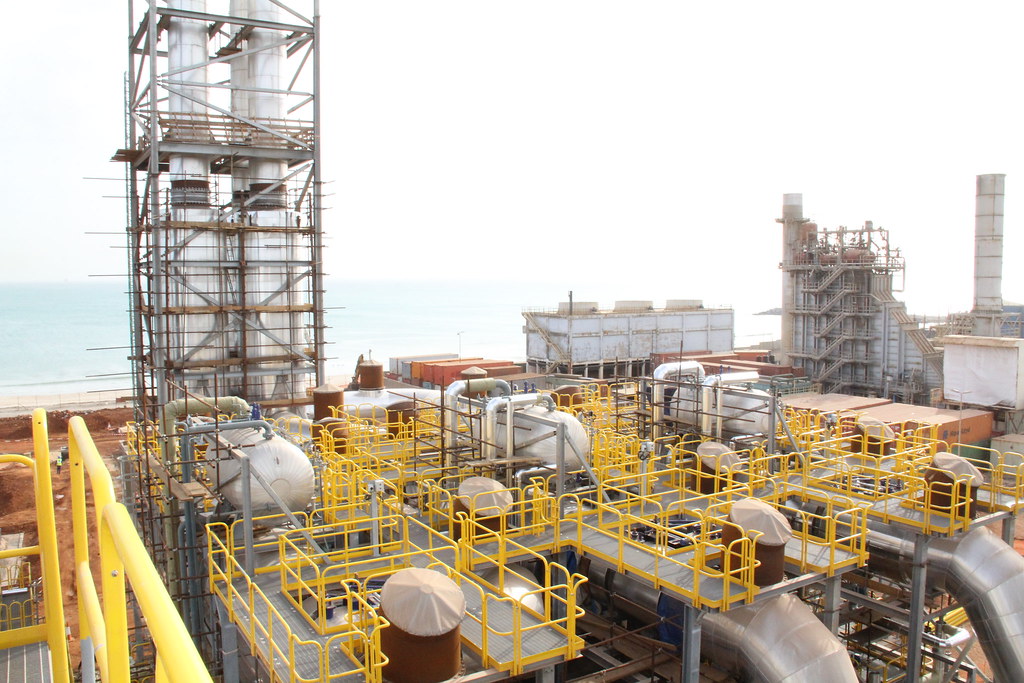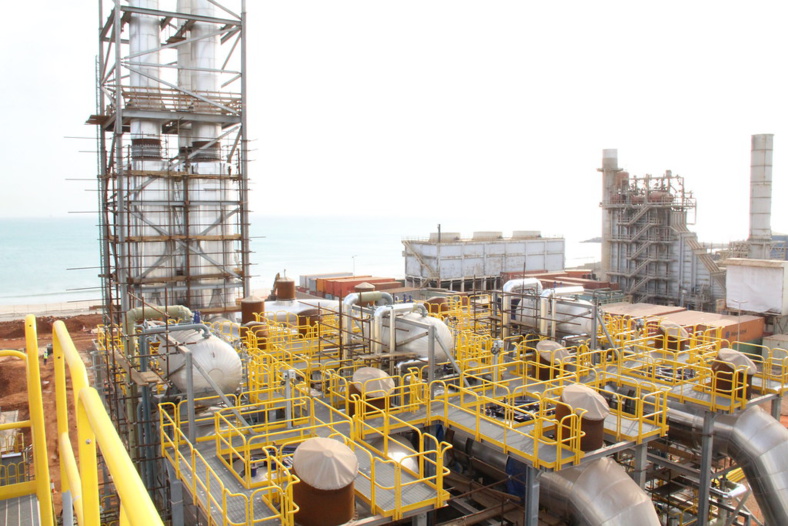Many of Africa’s challenges are simply related to the specific nature of the continent: a large and quickly-growing population, immense territories with little infrastructure, and generous but difficult to extract resources. Robyn Stastny recently reports for React: “From start-ups to a steady growth in industry, South Africa is a land of growing opportunity and vast resources. On the African continent it is making great strides in many growth sectors, most notably finance, e-commerce and tech.” The stability of the continent has improved, a little at a time, since the turn of the century. But the political road is not the only one to development, as private companies are turning up with increasingly applicable solutions, each of which could do much for the continent altogether.
Mobile phones, how a business solution became a development opportunity
The market of mobile phones boomed in the beginning of the century in Africa. Cheap, easy to connect, low in power consumption, the number of mobile phone users spread in African countries like wildfire. All Africa reports that “There are currently 960 million mobile subscriptions across Africa - an 80 percent penetration rate among the continent's population. Internet penetration is at 18 percent with 216 million internet users, according to the latest Jumia mobile trend report for Africa.” Through the distribution of mobile phones, the economic potential of African countries, and their ability to conduct business unhindered, was unleashed. Since the arrival of mobile phones in 2000, African GDP has increased by 300%, and some African countries where phone mobility is generalized, such as Nigeria, are expected to post the highest growth rates within the next 30 years. Just as the appearance of mobile communications enabled new development areas to form, increased water availability will form additional ones. If the water challenge is not addressed upstream, then shortages will quickly appear and limit growth rates.
Water, on which everything floats
Mozambique recently secured a 28-billion-dollar budget to upgrade its water supply system, as was commented on by the government: “The plan aims to assess current and future demands, and it also includes the instrument that prioritizes water storage infrastructure projects, as well as creating short-, medium- and long-term plans for resource development water resources.” Clean, accessible and safe water would eliminate the heaviest burdens of African populations: increased hygiene would lead to fewer disease rates and weaken their devastating consequences, steady supplies would keep factories running consistently and large volumes would increase agricultural output. For this, it is necessary to turn to the market, which has many solutions to offer with recent technological advances. World Bank Claudia Sadoff writes: “One trend is the rapid roll out of solar-powered irrigation in some countries, with the triple aim of strengthening water, energy and food security. Morocco, for example, expects to install more than 100,000 solar pumps by 2020. Similarly, Egypt is implementing a program of desert agriculture, involving the irrigation of 630,000 hectares with solar technology.” Such irrigation systems will enable the extraction of water, but not its purification.
Moreover, a large part of water pollution stems from industrial installations which therefore need to treat their wastewater before releasing it back into nature. Water treatment is one of the challenges of Africa's rapid industrialization and it is to face it that Veolia's Water Technologies, for instance, is installing wastewater treatment units specifically adapted to the growing industry. Its local subsidiaries enable it to offer a wide range of operations that can be adapted to both small and large industrial facilities, as is the case in Namibia, to name just one.
Solar power: start building
The solution, particularly suited to Africa, has shown remarkable potential since its inception, as studied by Enidays reports Robin Wylie: “This fact, coupled with Africa’s dire power shortage (around 600 million people on the continent lack access to electricity) points clearly to one solution: solar power. Yet despite Africa’s huge potential to harness solar photovoltaic, the technology has only recently begun to take off on the continent. In 2009, solar power was practically non-existent in Africa. Since then, however, solar power has made significant strides forward in Africa. As of 2016, Africa’s total installed solar PV capacity stood at just over 2 gigawatts—representing a growth of more than 2000 percent since 2009.” Recently, Soventix South Africa, a Zimbabwean subsidiary of Germany-based Soventix GmbH, was entrusted by the government with the construction of a solar park in the east part of the country. The project will cover 98.8 acres and will produce an annual power of 40 GWh. “The photovoltaic market in Zimbabwe is still in the initial stage. Hence, the country offers great weather conditions to use the potential of solar energy. With the high and predictable level of irradiation photovoltaic could be used to stabilise electricity supply and reduce energy costs”, commented Thorsten Preugschas, CEO of Soventix. In the rest of the continent, while jungle and canopy-covered areas may be unsuitable for such deployments, the entire Sahara and Sahel strips provide immense opportunities for all neighboring countries. 18 countries have borders within that area, and small independent networks could power another 20 countries or so, with cheap, clean and renewable power. According to the African Development Bank (AfDB), “manufacturers in sub-Saharan Africa experience an average of 56 days of shutdown time per year due to power outages.”
Africa cannot be considered in a monolithic view: areas of development are scattered, because each area has its own set of challenges and opportunities. But the majority of experts agree that sustainable resource management must be at the basis of any growth strategy, wherever it is launched. Africa is resourceful, and its natural wealth is already being used as the fuel of its development. Bearing in mind the vital importance of clean water access and implementing new sustainable solutions, will enable African dynamic areas to grow and multiply.
Mobile phones, how a business solution became a development opportunity
The market of mobile phones boomed in the beginning of the century in Africa. Cheap, easy to connect, low in power consumption, the number of mobile phone users spread in African countries like wildfire. All Africa reports that “There are currently 960 million mobile subscriptions across Africa - an 80 percent penetration rate among the continent's population. Internet penetration is at 18 percent with 216 million internet users, according to the latest Jumia mobile trend report for Africa.” Through the distribution of mobile phones, the economic potential of African countries, and their ability to conduct business unhindered, was unleashed. Since the arrival of mobile phones in 2000, African GDP has increased by 300%, and some African countries where phone mobility is generalized, such as Nigeria, are expected to post the highest growth rates within the next 30 years. Just as the appearance of mobile communications enabled new development areas to form, increased water availability will form additional ones. If the water challenge is not addressed upstream, then shortages will quickly appear and limit growth rates.
Water, on which everything floats
Mozambique recently secured a 28-billion-dollar budget to upgrade its water supply system, as was commented on by the government: “The plan aims to assess current and future demands, and it also includes the instrument that prioritizes water storage infrastructure projects, as well as creating short-, medium- and long-term plans for resource development water resources.” Clean, accessible and safe water would eliminate the heaviest burdens of African populations: increased hygiene would lead to fewer disease rates and weaken their devastating consequences, steady supplies would keep factories running consistently and large volumes would increase agricultural output. For this, it is necessary to turn to the market, which has many solutions to offer with recent technological advances. World Bank Claudia Sadoff writes: “One trend is the rapid roll out of solar-powered irrigation in some countries, with the triple aim of strengthening water, energy and food security. Morocco, for example, expects to install more than 100,000 solar pumps by 2020. Similarly, Egypt is implementing a program of desert agriculture, involving the irrigation of 630,000 hectares with solar technology.” Such irrigation systems will enable the extraction of water, but not its purification.
Moreover, a large part of water pollution stems from industrial installations which therefore need to treat their wastewater before releasing it back into nature. Water treatment is one of the challenges of Africa's rapid industrialization and it is to face it that Veolia's Water Technologies, for instance, is installing wastewater treatment units specifically adapted to the growing industry. Its local subsidiaries enable it to offer a wide range of operations that can be adapted to both small and large industrial facilities, as is the case in Namibia, to name just one.
Solar power: start building
The solution, particularly suited to Africa, has shown remarkable potential since its inception, as studied by Enidays reports Robin Wylie: “This fact, coupled with Africa’s dire power shortage (around 600 million people on the continent lack access to electricity) points clearly to one solution: solar power. Yet despite Africa’s huge potential to harness solar photovoltaic, the technology has only recently begun to take off on the continent. In 2009, solar power was practically non-existent in Africa. Since then, however, solar power has made significant strides forward in Africa. As of 2016, Africa’s total installed solar PV capacity stood at just over 2 gigawatts—representing a growth of more than 2000 percent since 2009.” Recently, Soventix South Africa, a Zimbabwean subsidiary of Germany-based Soventix GmbH, was entrusted by the government with the construction of a solar park in the east part of the country. The project will cover 98.8 acres and will produce an annual power of 40 GWh. “The photovoltaic market in Zimbabwe is still in the initial stage. Hence, the country offers great weather conditions to use the potential of solar energy. With the high and predictable level of irradiation photovoltaic could be used to stabilise electricity supply and reduce energy costs”, commented Thorsten Preugschas, CEO of Soventix. In the rest of the continent, while jungle and canopy-covered areas may be unsuitable for such deployments, the entire Sahara and Sahel strips provide immense opportunities for all neighboring countries. 18 countries have borders within that area, and small independent networks could power another 20 countries or so, with cheap, clean and renewable power. According to the African Development Bank (AfDB), “manufacturers in sub-Saharan Africa experience an average of 56 days of shutdown time per year due to power outages.”
Africa cannot be considered in a monolithic view: areas of development are scattered, because each area has its own set of challenges and opportunities. But the majority of experts agree that sustainable resource management must be at the basis of any growth strategy, wherever it is launched. Africa is resourceful, and its natural wealth is already being used as the fuel of its development. Bearing in mind the vital importance of clean water access and implementing new sustainable solutions, will enable African dynamic areas to grow and multiply.















